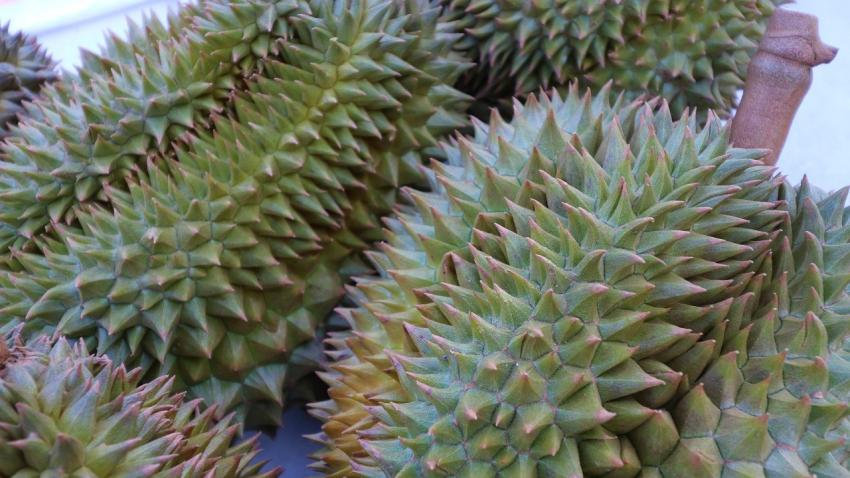Fresh Cambodian Durians Granted China Market Access [1]
Submitted by Jing Zang [2] on

On April 17 in Phnom Penh, Cambodia and China signed a phytosanitary protocol for the export of fresh Cambodian durians to China, along with protocols concerning two other products, namely, edible bird’s nests and crocodiles.
Currently, Cambodia is permitted to export four types of fruits directly to China: bananas, mangos, longans and coconuts. With the recent signing of the durian protocol and negotiations for pineapples and jackfruit still ongoing, this list is set to grow.
According to a news report [3] by the Khmer Times, on April 23, Cambodia’s Ministry of Agriculture, Forestry and Fisheries issued an announcement urging durian plantation owners, farming communities, and operators of fresh durian processing and packaging facilities to register their operations for export to China. The ministry intends to submit a list of registered plantations and facilities to Chinese authorities in May for review and evaluation, paving the way for formal exports to begin.
Cambodia’s durian harvest season occurs annually from May to June. The fruit is primarily cultivated in the provinces of Battambang, Kampot, Pursat, Kampong Cham and Tboung Khmum, as well as select areas of Koh Kong and Ratanakiri provinces.
Although Cambodian durians have not yet been officially approved for direct export to China, large quantities have long been transshipped through Thailand and Vietnam then re-exported to China under the guise of locally grown durians. Since 2023, Thai, Vietnamese and Chinese traders have shown increasing interest [4] in purchasing Cambodian durians.
Additionally, Chinese fruit companies and importers have been actively venturing into Cambodia to establish durian farming projects. In Battambang, Zhengzhou Chen’s Sun Group [5] from China has partnered with local enterprises to develop a durian plantation covering over 165 hectares. The project [6] is advancing steadily, with the construction of supporting infrastructure being expedited.
Image: Pixabay
This article was based on a Chinese article. Read the original article [7].
